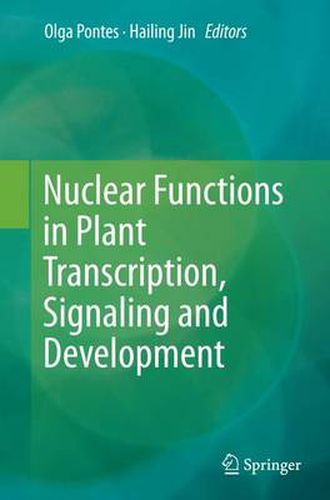Readings Newsletter
Become a Readings Member to make your shopping experience even easier.
Sign in or sign up for free!
You’re not far away from qualifying for FREE standard shipping within Australia
You’ve qualified for FREE standard shipping within Australia
The cart is loading…






This title is printed to order. This book may have been self-published. If so, we cannot guarantee the quality of the content. In the main most books will have gone through the editing process however some may not. We therefore suggest that you be aware of this before ordering this book. If in doubt check either the author or publisher’s details as we are unable to accept any returns unless they are faulty. Please contact us if you have any questions.
The genome is more than a linear code as depicted by its DNA sequences as several interacting factors play a crucial role in shaping its organization and function. The complete sequences of a number of plant genomes and the recent advances of high-throughput technologies has fueled research efforts in the field of Plant Nuclear Biology unveiling numerous insights about the mechanisms underlying genome regulation. Genomic information is being integrated into molecular- and cellular-level mechanisms of the plant processes. A host of nuclear processes underlie key developmental processes as well as biotic and abiotic interactions. Non-coding RNAs have been increasingly recognized as players in gene expression and genome defense and integrity. However, in vivo, genomes exist as elaborate physical structures, and their functional properties are strongly determined by their cellular organization. Various types of subcellular structure have been identified in the nucleus, which are associated with transcription factors, RNA processing proteins and epigenetic regulators. Interestingly, these nuclear bodies display different behaviors in response to the environment. This book compiles a series of landmark discussions of the recent advances in plant nuclear biology research focusing in the functional relevance of the arrangement of genomes and nuclear processes that impact plant physiology and development.
$9.00 standard shipping within Australia
FREE standard shipping within Australia for orders over $100.00
Express & International shipping calculated at checkout
This title is printed to order. This book may have been self-published. If so, we cannot guarantee the quality of the content. In the main most books will have gone through the editing process however some may not. We therefore suggest that you be aware of this before ordering this book. If in doubt check either the author or publisher’s details as we are unable to accept any returns unless they are faulty. Please contact us if you have any questions.
The genome is more than a linear code as depicted by its DNA sequences as several interacting factors play a crucial role in shaping its organization and function. The complete sequences of a number of plant genomes and the recent advances of high-throughput technologies has fueled research efforts in the field of Plant Nuclear Biology unveiling numerous insights about the mechanisms underlying genome regulation. Genomic information is being integrated into molecular- and cellular-level mechanisms of the plant processes. A host of nuclear processes underlie key developmental processes as well as biotic and abiotic interactions. Non-coding RNAs have been increasingly recognized as players in gene expression and genome defense and integrity. However, in vivo, genomes exist as elaborate physical structures, and their functional properties are strongly determined by their cellular organization. Various types of subcellular structure have been identified in the nucleus, which are associated with transcription factors, RNA processing proteins and epigenetic regulators. Interestingly, these nuclear bodies display different behaviors in response to the environment. This book compiles a series of landmark discussions of the recent advances in plant nuclear biology research focusing in the functional relevance of the arrangement of genomes and nuclear processes that impact plant physiology and development.